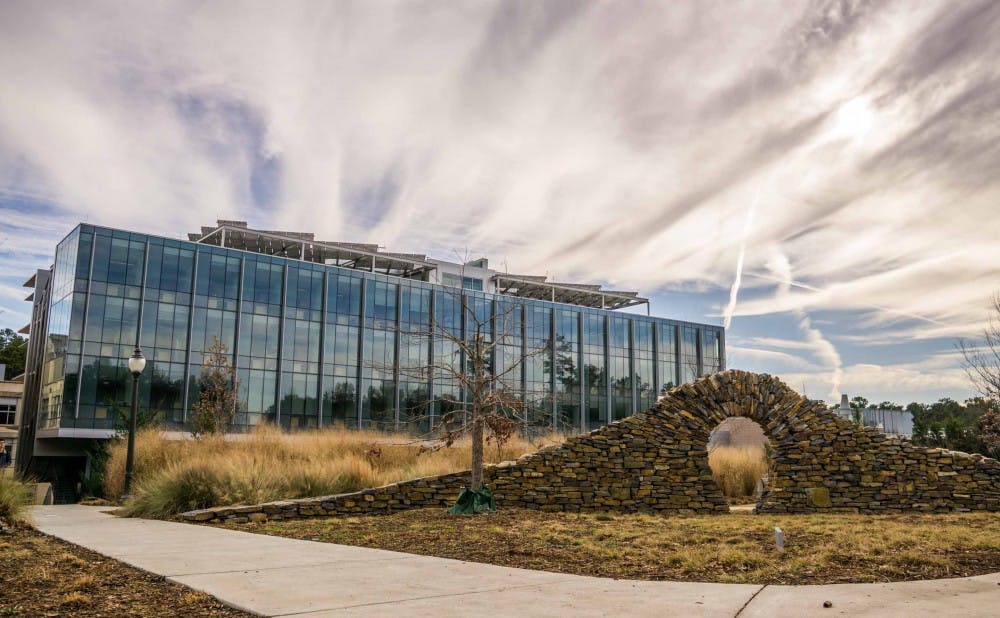A new study from the Nicholas School of the Environment suggests that the adoption of green technologies needs rapid acceleration in order to meet global climate change goals.
Researchers built a mathematical model that incorporated historical data on per-capita carbon dioxide emission rates, the rate of growth in industrial technologies as well as future population growth estimates. Through this framework, the investigators explored how different adoption rates of climate-friendly technologies could potentially slow down global warming, explained Gabriele Manoli, a former postdoctoral associate at the Nicholas School.
One of the goals of the study was to identify how progress could be made in complying with the Paris Agreement on Climate Change. The agreement outlines a goal of limiting global temperature changes this century to two degrees Celsius. However, the treaty has not been ratified by the United States, and President Donald Trump has previously indicated a desire to pull out of the pact.
“Science is telling us that it's not clear whether we will succeed. We already have green technologies—solar, wind and so on," Manoli said. "The fact is that having these technologies is not enough for really changing what's going on. The technology has to be adopted and not just adopted by [individual countries], it has to be adopted globally, and that's the key point."
Climate-friendly innovations often take years to achieve widespread use after their invention, said Marco Marani, professor of ecohydrology and study co-author. He added that these delays are due to political or economic factors, especially when the benefits of a new technology may not be as obvious as those from fossil fuels.
“Adopting fossil fuels means very quickly increasing your standard of living, at least immediately or in the immediate future, whereas adopting climate-friendly technologies means improving living conditions down the road in a few years,” Marani said.
Technology adoption in the past has faced delays, Manoli said, with large jumps in the carbon emissions rate correlated with advances in the industrial world. For example, he noted that per capita emissions every 60 years tended to jump by about 100 percent due to lags in implementing technology. The team used this concept to develop their prediction models.
Rather than determining an exact statistic, Manoli said, the team tested different scenarios to find the optimal rate of adoption for green technology on a global scale. To meet the Paris Agreement's goals, he said, the current estimated rate of technology adoption will have to increase by a factor of 10.
Acknowledging that changes in global temperature are inevitable, he explained that the two degrees target is based on health and agricultural concerns.
“[Previous investigators] quantified what the consequences are of having a world which is two degrees warmer compared to a world which is four degrees warmer,” Manoli said. “And they show that if you are above two degrees, you will start having problems with agriculture, or precipitation [patterns] will change drastically.”
Although the Paris Agreement was ambitious and a strong step forward, Marani said global policy makers will need to take a more collaborative approach to reduce carbon emissions.
“From what I know about the Paris Agreement, there was an agreement that was pretty strong in its objective, but there were few indications about how those objectives could be met,” Marani said. “There's no clear roadmap toward those goals, and our contribution, I think, kind of sets the constraints for whatever concrete policy agreement can be put in place. It has to be operational in a very short time, in the order of five to 10 years, and in a very aggressive manner.”
Manoli and Marani co-authored the study with Gabriel Katul, Theodore S. Coile professor of hydrology and micrometeorology.
Get The Chronicle straight to your inbox
Signup for our weekly newsletter. Cancel at any time.

